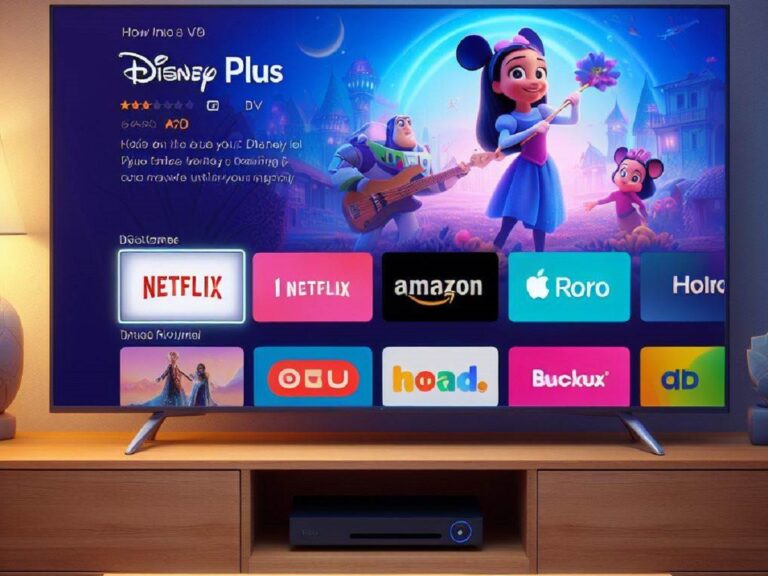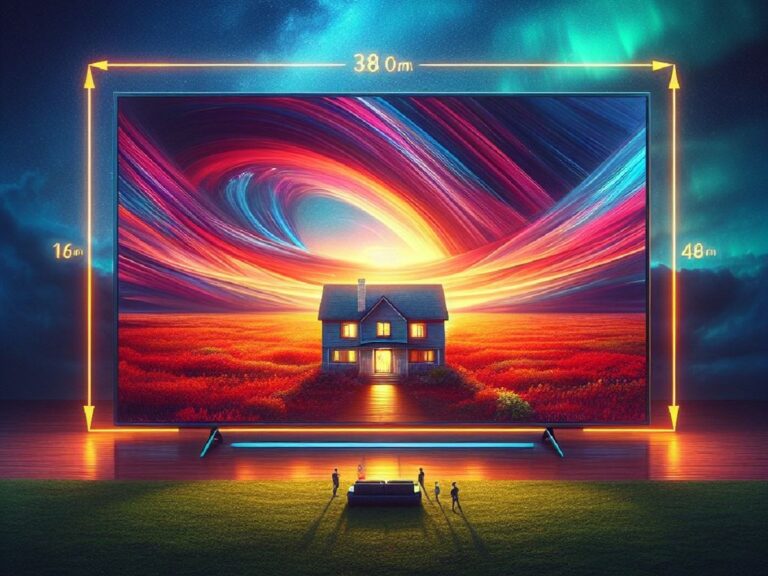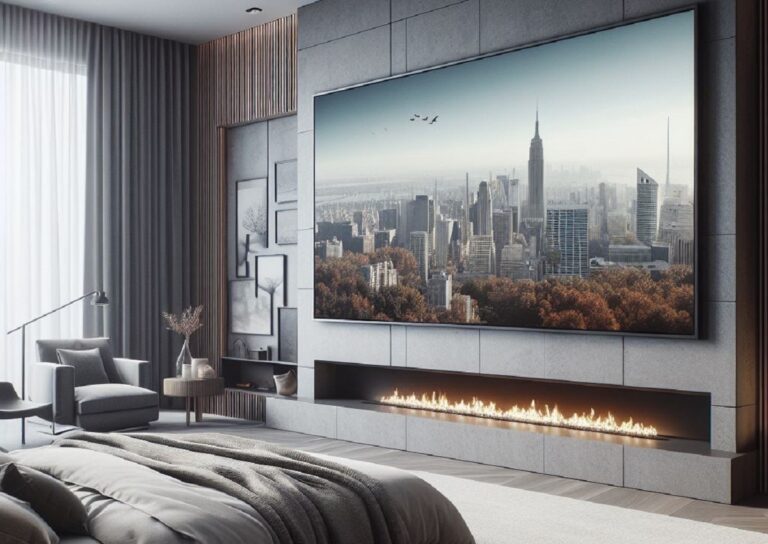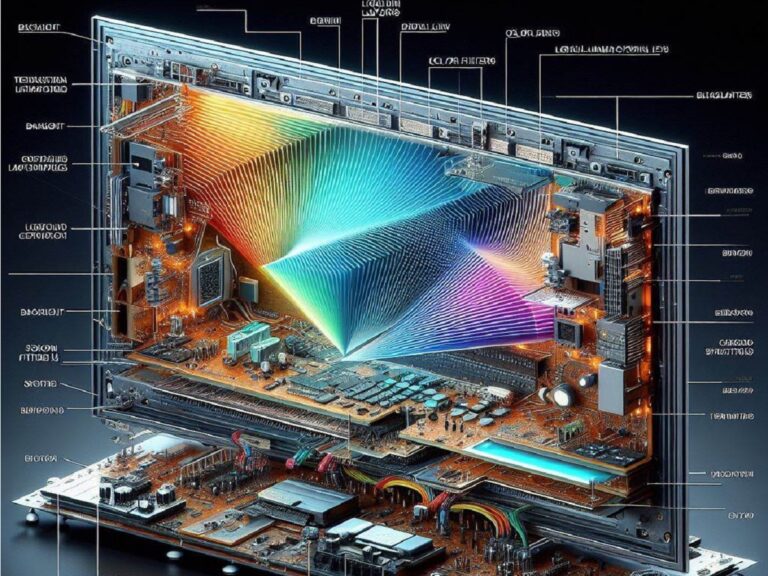Choosing a new TV can be exciting, but navigating screen size specifications can sometimes feel like deciphering a secret code. Don’t worry, this guide will shed light on how TV size is measured, empowering you to make an informed decision for your perfect viewing experience!
The Key Measurement: Diagonal Length
Unlike a picture frame where you measure height and width, TV size is all about the diagonal length. This refers to the straight line stretching from one corner of the screen (top left or right) to the opposite corner (bottom right or left). Imagine drawing a diagonal line across your TV screen – that’s the measurement that matters!
Why Diagonal Length?
Diagonal length provides a more accurate representation of the overall viewing area of a TV compared to just height or width. Since we typically view TVs straight on, the diagonal distance is what determines how big the picture appears to our eyes.
How to Measure Your Existing TV (Optional):
If you’re unsure of your current TV’s size, you can easily measure it yourself using a tape measure. Make sure the TV is off and unplug it for safety. With a gentle touch, lay the tape measure flat across the screen diagonally, from one corner to the opposite corner. The measurement you get in inches is your TV’s size.
Understanding Screen Size Labels:
TV sizes are typically displayed in inches. So, a 55-inch TV simply means the diagonal length of the screen measures 55 inches. It’s important to note that the actual physical dimensions of the TV, including the bezel (the frame around the screen), will be slightly larger than the advertised diagonal size.
Beyond the Label: Bezel Matters
While the diagonal length is the standard measurement, keep in mind that the width of the bezel can vary between different TV models. A TV with a wider bezel might have a slightly smaller viewable screen area compared to one with a thinner bezel, even if they share the same diagonal size.
Choosing the Right Size for Your Space
Here are some general tips to consider when choosing a TV size for your viewing distance:
- Closer Viewing: For smaller rooms or when you plan to sit closer to the TV (like a computer monitor), a smaller TV size (around 32-43 inches) might be suitable.
- Optimal Distance: For a more immersive viewing experience in a typical living room setting, a mid-range size (around 48-65 inches) is a popular choice. The ideal distance can vary depending on personal preference, but a general rule of thumb is to sit 1.5 to 2.5 times the diagonal screen size away from the TV for optimal viewing comfort.
- Large Screens and Spacious Rooms: For bigger rooms or if you desire a truly cinematic experience, larger TVs (around 70 inches and above) can be an option. However, ensure you have adequate space to maintain a comfortable viewing distance to avoid straining your eyes.
Additional Considerations:
- Resolution: Higher resolution TVs (like 4K or 8K) offer sharper picture quality, allowing you to enjoy the benefits of a larger screen size without sacrificing detail.
- Viewing Habits: If you primarily watch movies or play video games, a larger screen might enhance the experience. For casual TV viewing, a smaller size might suffice.
The Perfect Fit for Your Entertainment: Unveiling the Ideal TV and Soundbar Combo
Creating the ultimate home entertainment setup requires careful consideration of both visual and auditory elements. This guide will help you find the perfect fit – the ideal TV and soundbar combination – to elevate your movie nights, gaming sessions, and everyday TV viewing.
Selecting the Right TV: Size Matters, But So Does Resolution
We explored how TV size is measured in the previous guide. Here, we’ll delve deeper into factors to consider when choosing a TV:
- Size: As a reminder, TV size is measured diagonally in inches. Consider your viewing distance and room size. A larger screen (48-65 inches) might be ideal for a living room, while a smaller size (32-43 inches) might work best for a bedroom or closer viewing.
- Resolution: Resolution refers to the number of pixels that make up the picture. Higher resolution TVs (like 4K or 8K) offer sharper and more detailed images. If you plan on watching a lot of high-resolution content or enjoying the benefits of a larger screen size, consider a higher resolution TV.
Matching Your TV with the Perfect Soundbar
Now that you have a better understanding of TV selection, let’s explore soundbars to complete your entertainment haven:
- Soundbar Benefits: Soundbars offer a significant audio improvement over your TV’s built-in speakers, delivering richer, clearer sound. They’re typically more compact than traditional surround sound systems, making them a great option for space-conscious setups.
- Choosing the Right Soundbar Features: Consider features that complement your TV and viewing habits:
- Number of Channels: This refers to the number of speakers and the type of surround sound experience offered (2.1, 3.1, 5.1, etc.). More channels generally provide a more immersive sound experience.
- Connectivity Options: Ensure the soundbar has the necessary connections to your TV (HDMI, optical, etc.).
- Advanced Features: Some soundbars offer features like:
- Adaptive Sound Control (ASC): This technology automatically adjusts the sound profile for different types of content (movies, music, etc.).
- Wireless Rear Speakers (on select models): For a true surround sound experience, consider a soundbar with the option to add wireless rear speakers.
- Hi-Res Audio Support: If you have access to Hi-Res Audio files or streaming services, a soundbar with Hi-Res Audio support can provide a more detailed listening experience.
Creating a Cohesive Entertainment Experience
Here are some tips for achieving a perfect TV and soundbar combination:
- Size and Style: Choose a soundbar that complements the size of your TV. Consider the overall aesthetic of your entertainment setup – some soundbars offer a sleek, modern design that seamlessly integrates with your TV.
- Compatibility: Ensure the soundbar has the necessary connections to work with your TV. Most modern TVs and soundbars utilize HDMI connections.
- Budget: TVs and soundbars come in a wide range of price points. Determine your budget and prioritize features that are most important to you.
The Final Act: Your Personal Entertainment Symphony
By understanding how TV size and resolution impact your viewing experience, and by exploring the features offered by soundbars, you’re well on your way to creating a personalized entertainment symphony in your home. Consider your needs, space limitations, and budget to find the perfect TV and soundbar combination that elevates your movies, music, and TV shows to a whole new level of enjoyment!





